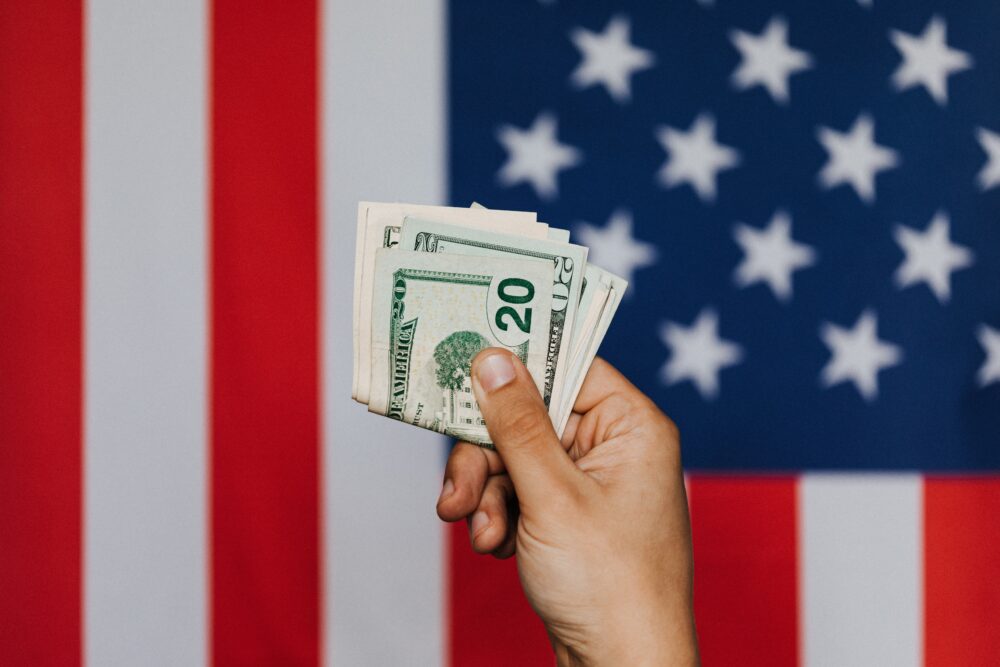Income vs Inflation
Paychecks are moving higher, but they are caught in a tangled dance with inflation.
Wages: Good News
Workers are earning more today than ever. However, income hikes are in dead heat with increasing prices.
The U. S. Labor Department reported employee pay jumped 1.5 percent in the third quarter. That is up from .9 percent in the second quarter.
Similarly, the value of benefits was up .9 percent in the third quarter. That is more than double the previous quarter.
“Not only are more Americans working, working Americans are seeing their paychecks go up,” President Biden said following a positive jobs report last week.
That Labor Department survey showed 531,000 new jobs were added to the economy in October and unemployment dropped from 4.8 percent to 4.6 percent.
Inflation: Bad News
Wages are increasing, but so is inflation. The price of buying food, gas, furniture, and other goods is rising.
Inflation got a jump start on wage increases as the economy opened up at the beginning of the year. From January through the end of September, prices of consumer goods rose 4.4 percent.
Over the same time, wages increased a record 4.2 percent.
The Labor Department’s measure of hourly wages shows pay increases gaining on inflation. In October wages rose .4 percent, about even with price increases.
Currently, hourly wages are up 4.9 percent for the year compared to the consumer price index of 5.4 percent.
Potential Price-Wage Spiral
All will be well if wages and prices settle on an equal plane. However, increased wages could fuel increased prices. That scenario is called a price-wage spiral.
The idea is that workers will seek higher pay to keep up with prices. Employers would then raise prices to pay workers higher wages and on and on.
The last price-wage spiral occurred in the late 1960s. However, most economists do not see that happening again. The reason: corporate profits have also increased dramatically.
Corporate profits in the second quarter were the highest they have been in a decade, Lydia Boussour of Oxford Economics told the Associated Press. That means many companies would not have to hike prices to cover increased wages.
The Federal Reserve has said it does not foresee a price-wage spiral.
“Today we see little evidence of wage increases that might threaten excessive inflation,” Fed Chair Jerome Powell said in late August. “Broad-based measures of wages that adjust for compositional changes in the labor force, such as the employment cost index and the Atlanta Wage Growth Tracker, show wages moving up at a pace that appears consistent with our longer-term inflation objective. We will continue to monitor this carefully.”
A Tale of Two Cities
The race to become the cryptocurrency capital of the United States tightened this week as New York City issued its NYCCoin.
The big apple joins Miami as the first city to issue its own cryptocurrencies.
Coins of Their Own
Miami Mayor Francis Suarez launched MiamiCoin, the city’s own cryptocurrency, in August. He announced Thursday, the day NCYCoin launched, that residents of the city will receive the proceeds of the cryptocurrency.
“We’re going to be the first city in America to give a bitcoin yield as a dividend directly to its residents,” Suarez told Coindesk.com.
Both coins are produced by CityCoins. Individuals mine tokens and are paid in city cryptocurrencies. Miners get 70 percent of the proceeds and the cities get 30 percent, according to CityCoins.
New York City was selected as the second city to obtain its own cryptocurrency. That was because of the crypto advocacy of Mayor-elect Eric Adams, reports CityCoins.
The End of City Taxes
MiamiCoin generated over $21 million for the city in its first three months. As a result, Suarez has speculated that revenue from MiamiCoin could eventually eliminate the need to collect taxes.
Mining city coins is easier and less energy depleting than Bitcoin or Ethereum, according to CityCoins.
MiamiCoin was listed on the OKcoin exchange in early August.
Cryptopay
Adams has made headlines by requesting his first three paychecks be converted to bitcoin. In addition, he has called for teaching cryptocurrency in the city’s public schools.
Adams joins Suarez in asking to be paid in bitcoin. The two are engaged in what Suarez describes as a “friendly competition”.
In New York we always go big, so I’m going to take my first THREE paychecks in Bitcoin when I become mayor. NYC is going to be the center of the cryptocurrency industry and other fast-growing, innovative industries! Just wait!
— Eric Adams (@ericadamsfornyc) November 4, 2021
Fast Start
Adams has some ground to cover if New York City is going to catch up to Miami. However, untangling technical snarls may allow time for that.
The newly re-elected Suarez got off to a fast start in February. At that time, he proposed offering city workers the option to take their salaries in bitcoin.
Exploring:
• State legislative priority
• Paying employees in Bitcoin
• Investing City treasury in BitcoinWe got it done ✅ pic.twitter.com/88laGvVbEG
— Mayor Francis Suarez (@FrancisSuarez) February 12, 2021
He also proposed collecting city taxes and fees in cryptocurrencies.
Investing to Fight Climate Change
Most people do not see financial opportunities when they think of climate change. However, there are plenty to be found.
The United Nations Climate Change Conference ended Friday with commitments from most governments to achieve net-zero carbon emissions by 2050.
There was even a blockbuster agreement between the United States and China to work together to reduce methane emissions, protect forests and phase out coal.
Investors Weigh In
However, even before the conference began, large financial concerns issued their own declaration urging action on climate change. The document is titled the 2021 Global Investor Statement to Governments on the Climate Crisis.
The 733 institutional investors who signed the document represent $52 trillion in assets, over half of all assets managed worldwide.
Better Planet, More Money
“The net-zero emissions transition is inevitable and already underway,” says Rebecca Mikula-Wright, CEO of AIGCC and IGCC. “Investors want to seize the enormous investment opportunities worth trillions of dollars that will be created in the transition to net-zero. There is a huge opportunity to create new jobs and boost economic growth, but only for those countries that get ahead of the curve.”
Not getting ahead of that curb has financial consequences.
“That is why so many investors are calling for strong climate policies in the federal budget reconciliation package,” adds Mindy Lubber, CEO of Ceres, a nonprofit working on sustainability. “If these measures are not included, we can say ‘goodbye’ to billions in would-be investments in the U.S.”
A Desire for Change
Climate change is a major concern for many investors, according to the Morgan Stanley Institute for Sustainable Investing. It found that 85 percent of investors are interested in sustainable investing.
“As the market matures, reaching $12 trillion in the United States alone, individual investors are also driving innovation,” according to the survey. “Increasingly proactive, they seek products and solutions across asset classes tailored to their interests. They also want to measure the environmental and social impact of their investments.”
A Mercer study, Investing in a Time of Climate Change, backs up the Morgan Stanley findings. It also spotlights the winners and losers in climate investing.
“Industry sector impacts will be the most meaningful,” states the Mercer report. “For example, depending on the climate scenario which plays out, the average annual returns from the coal sub-sector could fall by anywhere between 18% and 74% over the next 35 years, with effects more pronounced over the coming decade (eroding between 26% and 138% of average annual returns). Conversely, the renewables sub-sector could see average annual returns increase by between 6% and 54% over a 35 year time horizon (or between 4% and 97% over a 10-year period).”
Biden’s Push
President Joe Biden has proposed the most ambitious climate goals in history. He is calling for cutting greenhouse emissions in half by 2030. In addition, he is aiming for a carbon electrical grid by 2035 and net-zero carbon emissions by 2050.
As a result, more climate change investment opportunities will arise.
How To Get Your Money in the Fight
More and more companies want to position themselves as green. However, some offer only lip service. As a result, you have an obligation to do your research before investing.
Fortunately, several research sites break down the sustainability performance of ETFs, mutual funds, and individual companies.
An internet search for ESG funds or sustainable funds will net you a large number of options.
The links below can help you screen those options for ones that meet your environmental and social goals.
Read More
If you enjoy reading our blog posts and would like to try your hand at blogging, we have good news for you; you can do exactly that on Saving Advice. Just click here to get started.
Check out these helpful tools to help you save more. For investing advice, visit The MotleyFool.

Max K. Erkiletian began writing for newspapers while still in high school. He went on to become an award-winning journalist and co-founder of the print magazine Free Bird. He has written for a wide range of regional and national publications as well as many on-line publications. That has afforded him the opportunity to interview a variety of prominent figures from former Chairman of the Federal Reserve Bank Paul Volker to Blues musicians Muddy Waters and B. B. King. Max lives in Springfield, MO with his wife Karen and their cat – Pudge. He spends as much time as possible with his kids, grandchildren, and great-grandchildren.



Comments